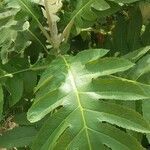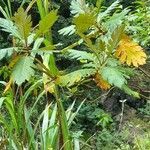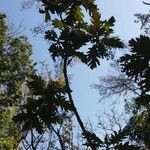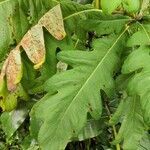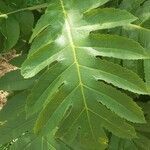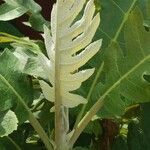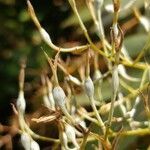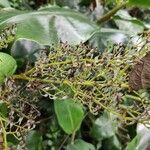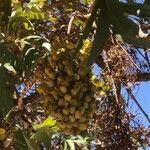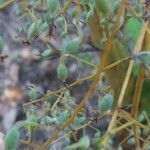Branched, firm shrub, 2-6 m; stem terete, with thick, white pith. Leaves petioled, in outline oblong-obovate, or oblong-lanceolate, with acute, blunt, rounded or subcordate base, and acute, serrate-dentate lobes (incised ± halfway the blade), glaucous, short cripsed-hairy underneath, 10-45 by 4-16 cm. Panicles densely branched, pyramidal, 20-60 cm long. Bracts lanceolate, acute, 2-5 mm, the lower ones hairy, upper ones glabrous. Pedicels 1/4-1 cm. Sepals erect, elliptic, blunt-acuminate, green, 8-10 mm long, reticulations red. Stamens 8-10; anthers linear, yellow, longer than the filaments, pendent in anthesis. Style 3-5 mm; stigmas at last recurved, already protruding in bud! Fruit ± 12 by 7 mm, ripening greyish, internally light-yellow, pulpy, smooth, ± ½ cm stipitate. Seed c. 1 by 3-3.5 mm, black, smooth, shiny, hard (crustaceous testa), covered in the lower h with the red, pulpy, plicate aril, hanging out of the mostly erect replum on a 1 mm long funicle; endosperm white; embryo small, basal.
